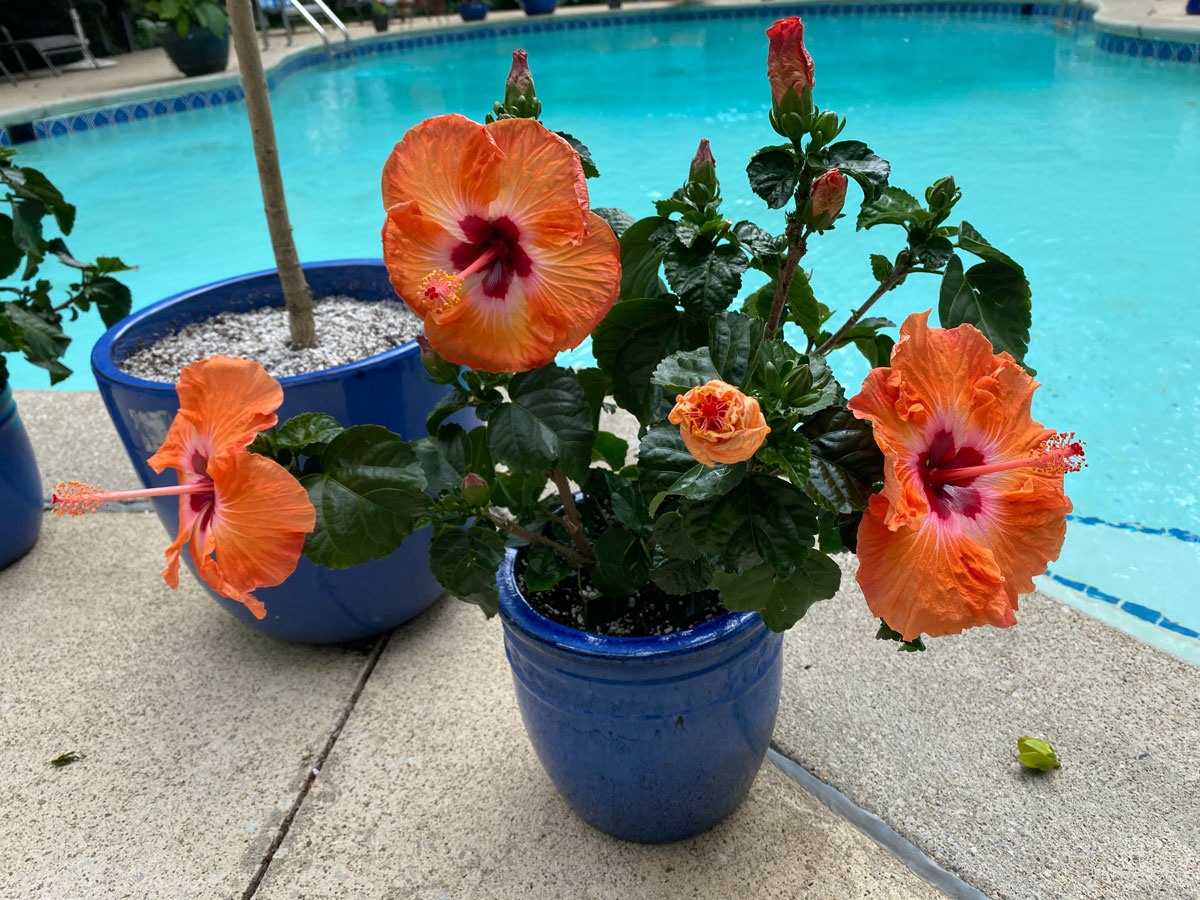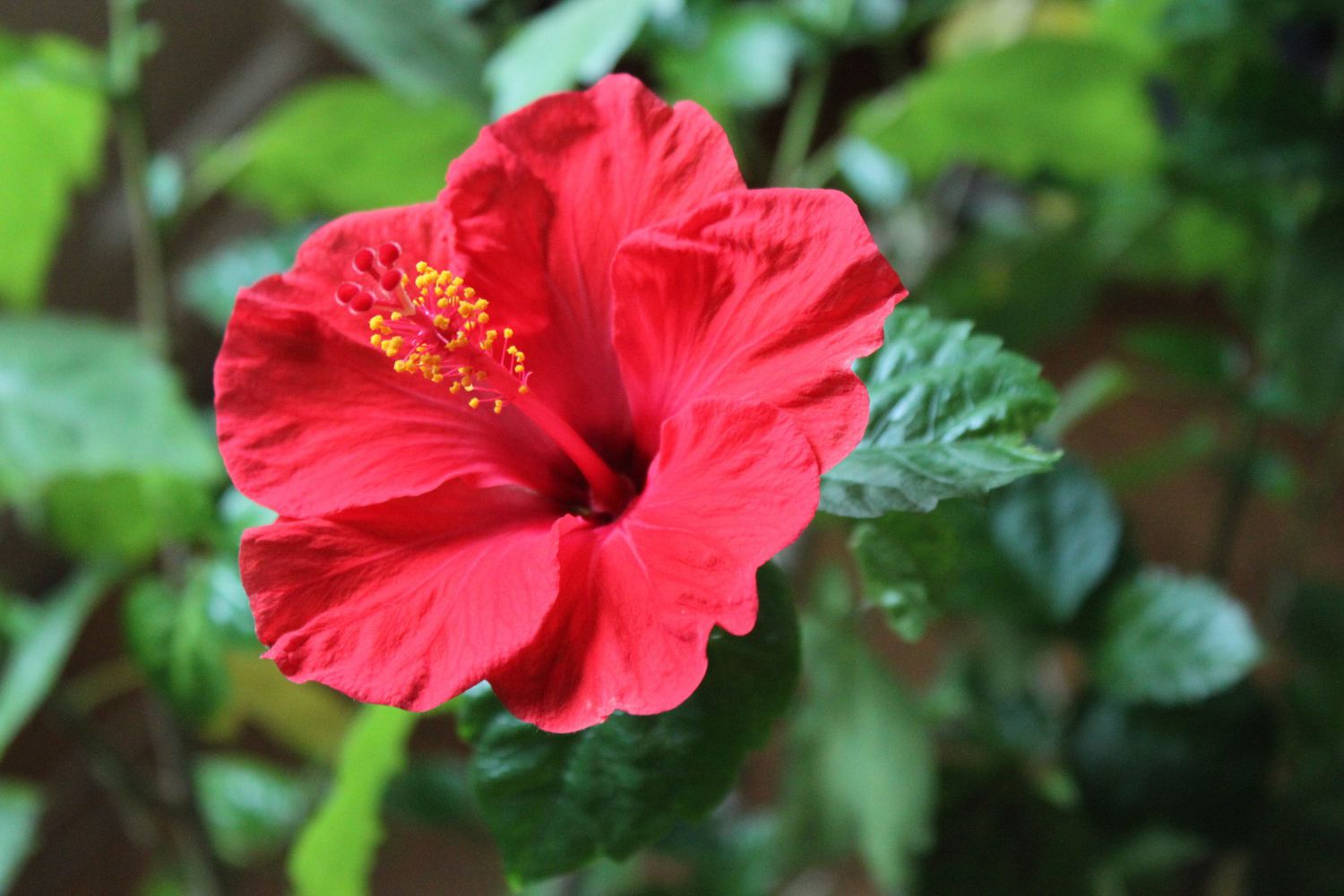To make your hibiscus bloom, provide it with ample sunlight and water it regularly while ensuring proper drainage. An ideal environment is created by planting it in well-drained soil mixed with organic matter.
Prune the hibiscus to encourage growth and remove any dead or damaged branches. Regular fertilization with a balanced fertilizer promotes blooming, with each application following the package instructions. Adjust the pH level of the soil, aiming for a slightly acidic or neutral range.

Credit: www.ohiotropics.com
The hibiscus benefits from a regular inspection for pests and diseases, which should be treated promptly. Finally, ensure proper spacing to allow air circulation around the plant, preventing fungal infections.
How to Make My Hibiscus Bloom : Step by Step Guide
Understanding The Hibiscus Plant
The hibiscus plant, known for its vibrant blooms, has some basic characteristics that make it unique. With over 200 varieties of hibiscus, each with its own distinct features, it offers a wide range of options for garden enthusiasts. Common types include the tropical hibiscus, hardy hibiscus, and rose of Sharon. These plants require specific conditions to thrive, such as well-drained soil, plenty of sunlight, and moderate humidity. They prefer a warm climate with temperatures around 60-90°F (15-32°C) and are often seen in tropical and subtropical regions. Proper care involves regular watering, fertilization with balanced nutrients, and pruning to encourage new growth and flowering. Additionally, hibiscus plants attract pollinators like bees and hummingbirds, enhancing the ecosystem in your garden.
Providing Optimal Care For Hibiscus
Choosing the right location for your hibiscus plants is crucial for their overall health and blooming. Keep in mind that hibiscus plants thrive in full sunlight, so it’s important to select a spot in your garden or patio that receives at least six hours of direct sunlight daily. **Avoid shady areas** as it can inhibit blooming.
Proper watering techniques are essential to keep your hibiscus healthy and encourage blooming. **Water your hibiscus** consistently, aiming to keep the soil moist but not waterlogged. The frequency of watering will depend on the climate and weather conditions in your area, but generally, hibiscus plants require watering at least once or twice a week.
The soil requirements for healthy hibiscus plants involve a well-draining and fertile soil. **Use a balanced potting mix** that contains organic matter and has good drainage. Adding compost or well-rotted manure can improve the soil structure and provide essential nutrients to the plants. Regularly feeding your hibiscus with a balanced fertilizer will also promote blooming.
Pruning And Maintenance Tips For Hibiscus
Importance of pruning hibiscus: Pruning plays a crucial role in encouraging blooming and ensuring the overall health of your hibiscus plants. By removing dead or diseased branches, you help the plant focus its energy on new growth and flowering.
Step-by-step guide to pruning hibiscus:
- Start pruning your hibiscus in early spring when new growth begins to emerge.
- Use sharp and clean pruning tools such as pruning shears or loppers to make clean cuts.
- Identify and remove any dead or weak branches first.
- Trim back any overgrown branches that are hindering airflow and sunlight penetration.
- Perform thinning cuts to reduce overcrowding and stimulate new growth.
- Continue shaping and pruning throughout the growing season, removing any spent flowers and leggy branches.
Essential tools for pruning hibiscus: To ensure successful pruning, it’s important to have the following tools:
| Pruning Tools | Description |
|---|---|
| Pruning shears | Sharp and sturdy shears for precise cuts on smaller branches. |
| Loppers | Long-handled shears with more leverage for cutting thicker branches. |
| Gloves | Protective gloves to shield your hands from scratches or potential allergens. |
| Disinfectant | A disinfectant solution to clean your tools in between cuts to prevent disease transmission. |
Troubleshooting Common Issues With Hibiscus
The key to making your hibiscus bloom is addressing common issues that may be hindering its growth. Pests can often be a cause for concern, so it’s important to identify and treat them promptly. Some common pests that attack hibiscus plants include aphids, spider mites, and whiteflies. Regularly inspect your plant for any signs of infestation such as distorted leaves or sticky residue. Treat the infestation with organic insecticides or by introducing beneficial insects like ladybugs or lacewings.
Yellowing leaves can also indicate a problem with your hibiscus. This can be due to nutrient deficiencies or overwatering. Ensure that your plant is receiving adequate sunlight and nutrients. If the soil is too wet, allow it to dry out between waterings.
Fungal infections can also impact the health of your hibiscus. To manage them, provide proper air circulation around the plant and avoid overwatering. If you notice signs of fungal infections such as powdery mildew or leaf spots, treat them with fungicides specifically formulated for hibiscus plants.
| Problem | Solution |
|---|---|
| Pests | – Regularly inspect for pests – Treat infestations with organic insecticides or beneficial insects |
| Yellowing leaves | – Ensure adequate sunlight and nutrients – Allow soil to dry out between waterings |
| Fungal infections | – Provide proper air circulation – Avoid overwatering – Treat infections with hibiscus-specific fungicides |
Enhancing Bloom Production In Hibiscus
Enhancing bloom production in hibiscus can be achieved through effective feeding and fertilizing strategies. Utilizing natural remedies can help boost bloom production and promote healthier growth in hibiscus plants. Consider incorporating organic fertilizers that are rich in essential nutrients, such as nitrogen, phosphorus, and potassium. These nutrients are vital for vibrant blooms. Make sure to choose a fertilizer specifically formulated for flowering plants.
Additionally, regular feeding is crucial to provide the necessary nutrients. Apply the fertilizer according to the instructions on the package, ensuring not to overdo it, as excessive fertilization can be harmful. Mulching around the base of the plant can also help retain moisture and improve soil fertility, further enhancing bloom production.
Consider using natural remedies like compost tea or organic plant extracts, which can stimulate blooming in hibiscus. These remedies contain beneficial microorganisms and minerals that promote overall plant health and flower development. Incorporating these strategies into your hibiscus care routine will provide optimal conditions for abundant and vibrant blooms.
Extending The Bloom Season For Hibiscus
One of the most enchanting aspects of hibiscus plants is their vibrant blooms. To make your hibiscus bloom for a longer duration, there are a few techniques you can try. Deadheading spent flowers is a simple yet effective way to encourage continuous blooming. By removing faded blooms, you stimulate the production of new buds, extending the hibiscus’ bloom season.
Another method to consider is overwintering your hibiscus. This involves bringing the plant indoors before the arrival of frost and providing it with adequate care during the winter months. By protecting hibiscus from harsh weather conditions, it continues to produce flowers, ensuring a more prolonged blooming period.
Tips for deadheading spent flowers:
- Use sharp pruners or scissors to remove faded flowers.
- Make clean cuts just above the nearest set of healthy leaves or buds.
- Regularly check for new blooms and repeat the deadheading process.
Overwintering hibiscus for continuous blooms:
| Steps | Details |
|---|---|
| Choose a suitable location | Find a spot indoors with ample sunlight, such as a south-facing window. |
| Reduce water and fertilizer | Decrease watering frequency and halt fertilization during the dormant period. |
| Monitor for pests | Closely inspect the plant for any signs of pests and take necessary action. |
| Maintain ideal temperature | Keep the hibiscus in a room with temperatures around 60-65°F (15-18°C). |
Showcasing Beautiful Hibiscus Bloom Displays
Looking to make your hibiscus bloom? Showcase the beauty of your hibiscus plants with these creative ideas for displaying their stunning blooms.
Arranging hibiscus blooms in floral designs is a great way to make them stand out. Try creating a centerpiece using a variety of hibiscus colors and sizes. Place the blooms in a decorative vase and add some greenery for an eye-catching display.
Another idea is to photograph your hibiscus blooms for stunning visuals. Capture their vibrant colors and intricate details up close. Use natural lighting and experiment with different angles to bring out the best in your hibiscus flowers.
Remember to showcase your hibiscus blooms in a way that reflects your personal style and creativity. Whether you choose to arrange them in a floral design or capture them with your camera, let the beauty of your hibiscus shine.
Frequently Asked Questions For How To Make My Hibiscus Bloom
Why Is My Hibiscus Plant Not Flowering?
The hibiscus plant may not be flowering due to improper pruning or insufficient sunlight.
Does Epsom Salt Help Hibiscus Bloom?
Yes, Epsom salt can help hibiscus bloom by providing essential nutrients to promote healthy growth.
What Can I Feed My Hibiscus To Bloom?
To make your hibiscus bloom, feed it with a balanced fertilizer high in phosphorous and potassium.
Should I Put Coffee Grounds On My Hibiscus?
Yes, coffee grounds can be beneficial for hibiscus plants.
Conclusion
Cultivating a blooming hibiscus requires a combination of proper care, maintenance, and patience. By following the best practices outlined in this guide, you can create an ideal environment for your hibiscus to thrive and produce beautiful blooms. Remember to provide adequate sunlight, water consistently but not excessively, fertilize sparingly, and protect your plant from pests and diseases.
Regular pruning and removing spent flowers will encourage new growth and more vibrant blooms. Additionally, understanding the specific needs and preferences of your hibiscus variety will enable you to tailor your care routine accordingly. With consistent attention and a little TLC, you can ensure that your hibiscus blooms to its fullest potential, bringing a burst of color and beauty to your garden or indoor space.
Happy gardening!

